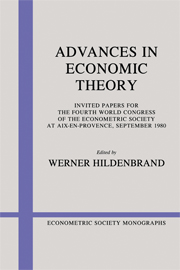Chapter 10 - The new industrial organization and the economic analysis of modern markets
from Part VI - Industrial organization
Published online by Cambridge University Press: 05 January 2013
Summary
The new industrial organization
It is generally accepted that the modern field of industrial organization began with the work of Edward Mason and others at Harvard in the 1930s. Lacking faith in the ability of available price theory to explain important aspects of industrial behavior, Mason called for detailed case studies of a wide variety of industries. It was hoped that relatively simple generalizations useful for antitrust policy, among other applications, would emerge from a sufficient number of careful studies. Perhaps because such generalizations were not actually uncovered very rapidly by case analysis, or perhaps because of easier access to data and computers, the case study approach was generally abandoned by the early 1960s. Most students of industrial organization followed Joe Bain (1951, 1956) and turned instead to cross-section studies, electing “to treat much of the rich detail as random noise, and to evaluate hypotheses by statistical tests of an interfirm or interindustry nature.” The need to describe each firm or industry in the sample by a small number of more or less readily available measures effectively limited consideration to relatively simple hypotheses not involving “the rich detail” so important to students of particular industries. Thus, the standard regression equation in this literature specified some measure of profitability as a linear function of a concentration ratio and, usually, other similar variables. Bain's (1959, 1968) text, which dominated the U.S. market during the 1960s, similarly focused on simply-stated qualitative generalizations and contained almost no formal theory.
- Type
- Chapter
- Information
- Advances in Economic Theory , pp. 253 - 285Publisher: Cambridge University PressPrint publication year: 1983
- 4
- Cited by

